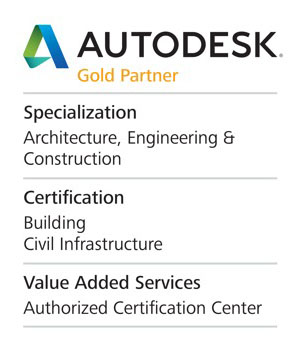Autodesk's integrated BIM solution for underground pipe corridors


Create Construction model of the simple pipe gallery
Skill in using Revit software to create a standard section of the underground integrated pipe gallery and install the main structure of the hole.

The ability to use Revit software to create the main structural components of underground pipe corridors.

Revit software is used to create the main structural components of underground integrated pipe trench and underground integrated pipe corridor.

Create MEP model of the simple pipe gallery
Revit is used to create the water supply and drainage pipe model of each system in underground integrated pipe corridor.
The model of a water pipe with fittings and valves, including water, fire, water and drainage systems

Use Revit software to create the cable and bridge model in the underground integrated pipe corridor.

Use Revit software to create a variety of mechanical and electrical pipelines throughout the underground integrated pipe corridor, including water supply and drainage systems and electrical systems.
Underground integrated pipe corridor electromechanical model

Integration of simple pipe corridor civil engineering and mechanical and electrical synthesis model
The "link" function in Revit is used to integrate the whole underground integrated pipe corridor model, including structural model and electromechanical model, in Revit.
Underground integrated pipe corridor structure + mechanical and electrical integrated model

Application of BIM technology in complex pipe corridors
Create complex gallery model
Pipe corridors need to pass through important structures
Surrounding barriers with high risks need to be removed or protected
Identify potential risk points in the solution
To elaborate practical project implementation plans
The advantages and disadvantages of the scheme are compared to facilitate the stability and optimization of the scheme
The tube corridor section is a circular structure

Create MEP models of complex corridor
By using Inventor, it is very convenient and efficient to create the pipe and equipment model of underground comprehensive pipe corridor with circular section and straight, curved and double inclination, as well as internal mechanical and electrical systems.

Inventor makes it very convenient and efficient to create complicated mechanical and electrical system models in underground pipe corridors.

Integration of complex pipe corridor main body and internal mechanical and electrical synthesis model
By using Inventor, the mechanical and electrical model of main structure of pipe corridor can be integrated quickly and conveniently to form a complete underground comprehensive pipe corridor civil engineering + mechanical and electrical integrated model.
Underground comprehensive pipe corridor structure + electromechanical complete model

The normal cutting of complex tunnel tunnel model is created
Using Inventor, it is very convenient and quick to perform normal cutting at any location of the main body of the underground composite pipe corridor with circular structure and straight, curved or double oblique cross-section.


Inventor allows you to quickly and accurately annotate and create a normal section diagram of the main body of an underground composite pipe gallery with a circular section with straight -, curved - or double-diagonal sections.

Integrate other 3D software to create device models
Inventor is compatible with and integrates the gallery mechanical and electrical equipment and related models provided by UG NX, Pro/Engineer, CATIA, Solidworks and other equipment suppliers.

Integrate other 3D software to create device models
Inventor is compatible with and integrated with UG NX, Pro/Engineer, CATIA, Solidworks and other equipment suppliers.

Statistical Quantity
Use Inventor's powerful BOM function to accurately count the number of mechanical and electrical equipment and related accessories in the pipe gallery.

Supporting application of other BIM tools in pipe corridor
Create the terrain
In Civil 3D, relevant functions such as relief surface are used to create terrain and landform matching roads, Bridges, pipe corridors, etc., and the terrain model maintains the dynamic relationship with relevant elements (such as feature lines, road models and relief objects).

Earthwork balance
Reduce redundancy in the workflow by analyzing the built model. Get feedback in real time when optimizing the design. Use slope, elevation, and contour analysis to better understand your surface model. Earthwork deployment and earthwork functions help contractors and engineers plan the movement, quantity, and placement of materials during construction.
According to the design changes, the filling and excavation diagram can be quickly generated to:
Analyze the balance point of excavation and filling
Determine the number and direction of materials to move
Designated pit and dump site

Drawing standard
Use a rich country-specific CAD style library to meet your civil mapping and documentation needs. Control color, linestyle, contour increment and label by style. Use the framework to customize the organization's style and standards. Share drawing and design standards across organizations through style management tools.
Label the position of gravity pipe and pressure pipe passing through the route or sampling line in the vertical and cross section drawings
Label the position where the pressure pipe crosses the sampling line in the cross section
Specify the direction of the cross section in the cross - section diagram axis
View the cross-sectional view from left to right or right to left
Specify elevation values to enhance visibility in the cross-sectional diagram

Construction documents
Generate construction drawings, including annotated cross section, vertical section and slope relief design. Use style-based formatting to better maintain drawing standards while automating typical drawing operations. Using external references and data shortcuts to generate sketches of multiple drawings, this workflow USES only one model instance to create shop drawings. Synchronize construction drawings to reflect model changes.
Construction documents allow users to get comments directly from design objects and update them automatically as design changes. The software also responds to changes in drawing scale and view orientation, and updates labels when printing scale changes or rotations occur in different viewports.
The software also includes cross labeling of pressure pipe in vertical and cross sectional drawings and cross labeling of gravity pipe in vertical and cross sectional drawings.

Model integration
Import data and merge models: integrate gallery and terrain models created by Inventor, Revit, and Civil 3D
Integrate data from existing RVT, FBX, LandXML, DWG, SHP, IMX, and point cloud file formats. Import from a file-based or database source to create the base model from multiple sources
·Support for new data formats including: AutoCAD 3D DWG?, Civil 3D DWG?, 3D DGN, IFC, and Sketchup (SKP)
·For some data sources, cloud imports (InfraWorks only) or local imports are chosen based on the user's preferences or project requirements

Model merge with roaming browsing
Browse: ability to export from an interface in Revit or Inventor the ability to import and integrate complete subsurface integrated trench or gallery models into Navisworks. It can also browse the entire model and roam through it from a first-person perspective.

Measurement of the query
Measurement queries: in Navisworks, the surface and point capture feature captures the size savings from the model for greater accuracy and effective control

Review comments
Use the review annotation tool in the Navisworks project review software to communicate design intentions more clearly and facilitate collaboration between team members and different disciplines to better predict and minimize errors and omissions in the early stages of the project.

Enhance visualization and combine with virtual reality technology
Twinmotion allows you to export high-quality images, videos, and 360-degree panoramic files in a short amount of time at extremely fast rendering speeds. Twinmotion supports exported panoramic images and videos for web browsers and mobile devices. Users can interact with and browse the scene in a 360-degree manner.

Virtual Reality
From project construction to post-project review, Twinmotion allows you to explore 3D models in a VR (virtual reality) environment at any time. Twinmotion supports the HTC Vive, Oculus Rift and Gear VR headsets. What you see is what you get, any changes the user makes to the 3D model are rendered in real time in virtual reality!

BIM 360 Glue
Expand to the cloud, to achieve the model and on-site physical comparison, mobile office and design inspection
BIM 360 Glue is a cloud-based BIM management and collaboration platform that can collaborate with the entire project team and BIM workflow of users and can be carried out in the preliminary workflow of construction projects. Users can access the latest project files and model data almost anytime and anywhere during the full life of the project. BIM 360 Glue can help users to review projects and solve and coordinate problems more quickly during project construction.



